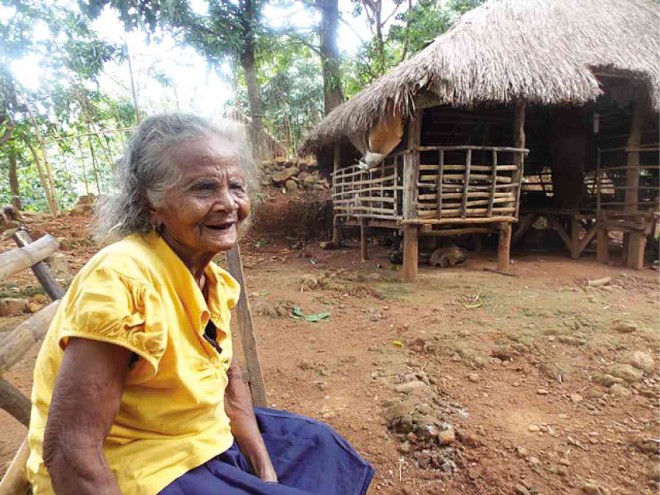Aeta folk observe All Souls’ Day with lowlanders

LORETA Dabe, a 70-year-old Aeta, says she will implore the souls of her departed relatives to give her good health and protect her from danger. ALLAN MACATUNO/INQUIRER CENTRAL LUZON
BOTOLAN, Zambales—Lilia de la Cruz, an Aeta, could barely remember how her mother died almost 30 years ago. She was only 7 then and they had been living at the foot of Mt. Pinatubo before the volcano’s catastrophic eruptions.
In 1991, De la Cruz and her father, along with her siblings, were forced to leave their dwelling place in the mountain and almost everything behind because of the disaster that destroyed their livelihood. From one evacuation site to another, they moved in search for a safe place where they could settle for good.
At the Loob Bunga resettlement site in Barangay Palis here, De la Cruz and her family found their home.
Her father, however, died a few years back due to an illness. Unlike her mother, he was buried in a local cemetery that they share with lowlanders.
De la Cruz described her father’s wake and burial as similar to the traditions of the lowlanders.
“My father’s body was embalmed so we could hold a wake for three days. His resting place is a cemetery and we visit his grave on Nov. 2, just like what anybody else here does nowadays,” De la Cruz told the Inquirer.
Gone were the days when they would bury their dead kin in the mountains, as what their forefathers did, her husband Tirso, 36, said.
“We’re now living in the lowlands and we’re practicing a new faith taught by Christian missionaries. When it comes to honoring or remembering our dead loved ones, we’re no longer different from the lowlanders,” he said.
Loreta Dabe, 70, also an Aeta, said her ancestors were buried around the slopes of Pinatubo in the days before the eruptions. At times, she would implore the souls of her departed relatives to give her good health and protect her from danger.
Dabe’s husband died here and was buried in the town’s cemetery a few years ago. His funeral was typical of what lowlanders do for their kin.
“When my husband died, I wore black to show that I was the wife. I received visitors during the wake and there’s not much rituals to observe,” she said.
Many Aetas have learned to embrace the lifestyle, traditions and faith of the lowlanders who have lived with them in resettlement areas. They remember their dead on Nov. 3 when they celebrate the feast day of
St. Martin de Porres, said James Cabalic, 55, an Aeta and resident of Barangay Mambog in the outlying area of this town.
St. Martin de Porres, the patron saint of mixed-race people and all those seeking interracial harmony, is the village’s patron saint, Cabalic said.
They also clean the graves, bring flowers and light candles on that day to honor their departed loved ones.














